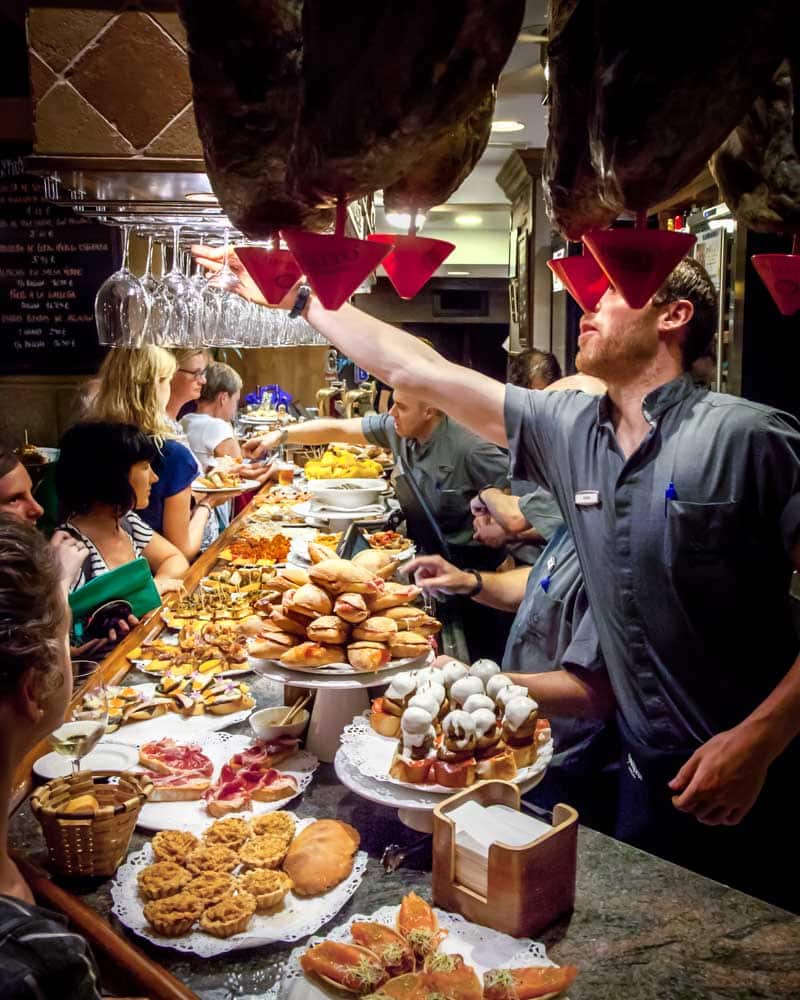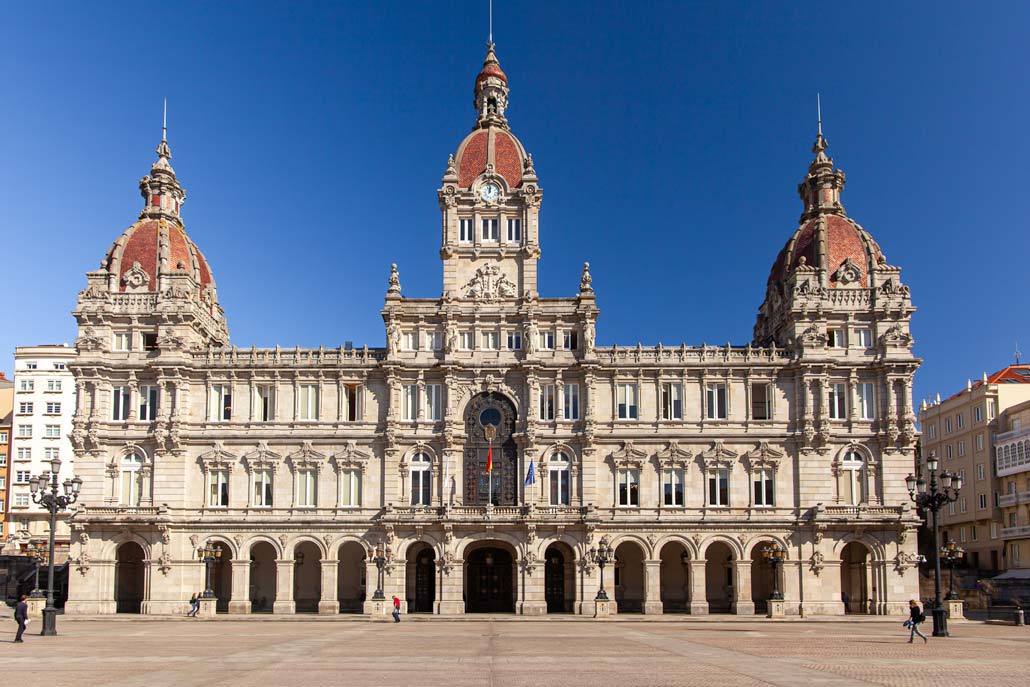Northern Spain Food Tour with Intrepid Travel
This website uses affiliate links which may earn a commission at no additional cost to you. As an Amazon Associate I earn from qualifying purchases.
Updated: 22nd February 2019
I wrote this article for original publication on Intrepid Travel’s website as A culinary journey across Northern Spain after taking the Northern Spain Real Food Tour on assignment for the launch of Lonely Planet’s Ultimate Eatlist.
Spain is a country renowned worldwide for its perfectly crafted cuisine, fresh seasonal produce and passionate chefs who can take the simplest of ingredients and turn them into a mouth-watering journey for your taste buds.
It’s also home to the Ultimate Eatlist number one, pintxos in Donostia in San Sebastián, a culinary gem found in the Basque Country. But with each region and province serving up their own tasty local treats, to tick off all the 13 Spanish foodie experiences featured, you’ll have to take a journey across the country. And, who wouldn’t want to eat their way from paella to pintxos or tapas to Torta de Santiago anyway? This was one trip I couldn’t wait to get my teeth into!

No matter what destination my food tour of North Spain went to, nearly every morning began at the market. With fresh, seasonal produce being the focus here, and local ingredients and flavours prevailing, a trip to the market is much more than a shop, it’s a social exercise in itself.
In Barcelona, Sarah, who would later cook us up some Catalonian treats in her home, guided us through a few of the local markets to meet her suppliers, or should I say, friends. The community bonds between those who sell and buy at these markets are genuine, and the community seems to be at the heart of the culinary culture throughout the country. Celebrating the market culture of Spain, at number 23 on the Ultimate Eatlist, is Barcelona’s La Boqueria market, which is by far one of the most visited by tourists. This bustling pit stop on La Rambla is a buzz of bars, stalls and samplers, and a great introduction before hunting out some of the smaller markets throughout the city.

Logrono is at the heart of La Rioja, and as such, it’s a wine-lovers destination, especially during the San Mateo festival, which blissfully coincided with our visits. The streets were electric with music, glasses of fine red wines clinked together in squares, and we worked our way through countless bars on a ‘tapas-crawl’, the more foodie and refined way of having a bar-crawl.
Not happy with just sampling these local wines, we headed to Laguardia, a well-preserved medieval town, to see them at their source. Over 240 tunnels run underneath this walled town, and many of these are wine cellars or production areas. Climbing down the stairs of one Bodega, where the wine is still traditionally pressed by foot, we sampled both old and young Riojas in the very cellar they aged in.

Topping the Ultimate Eatlist are pintxos in San Sebastián; small and delicious, these flavoursome treats come in many forms. From the simple and tasty mini-skewer combination of olive, anchovy and pepper known as the ‘Gilda’, the most traditional pintxo, to intriguing ingredients piled high on bread, this is a dining delight that involves multiple flavours.
Don’t mistake pintxos for tapas, though; these tiny bites are mainly to be found in the Basque Region and aren’t to be confused with the traditionally free bar snacks of tapas which are served in other parts of Spain. Pintxos are ordered and paid for individually and aren’t just an accompaniment to a drink; they are the star attraction and a social dining experience.
The best way to enjoy pintxos in San Sebastián is by taking to the buzzing streets of the old town where countless bar-tops are piled-high with numerous variations, from tooth-pick based stacks to mini-sandwiches.
This is social dining at its very best, and the crowds from the bars spill out onto terrace tables, street stools, beautiful plazas and even church stairs to enjoy the atmosphere of dining in this culinary city. Don’t start your editable escapade too early, though; 9 pm is about the earliest to hit the streets if you want to enjoy your pintxos with a slice of social buzz in one of Europe’s best food cities. You should be expecting to be eating and drinking for much of your evening in the old town. Is there any better excuse for a mid-afternoon siesta?

While you can grab a plate and quickly fill it with the tempting and delectable bites before you, do as the locals do and take yourself on a bar-hopping adventure. This way, you can sample various treats in different bars. Order a glass of the local wine, Txakoli, and enjoy the theatre of the skilled bartenders pouring it from a height, which increases the bubbles in the glass, before sampling a small selection of the bar-top snacks or blackboard specials.
It’s easy to miss the specialities on the blackboards, which are usually cooked fresh, unlike the spread on the counter, but be sure to ask the bartender what their best dish is and order away. Whether it is battered white asparagus or mushrooms soaking in garlic, make sure you leave space to enjoy the warm dishes. While we were in Bilbao, we continued our indulgence on the Pintxos after exploring the impressive Guggenheim museum.
There is no denying that San Sebastián is a breathtaking beach destination, especially the views overlooking the bay from the top of Mount Igueldo, a tremendous post-pintxo burn off the hike or easily accessed by funicular.
But there is a lot more to this destination than meets the eye, especially for those with a real passion for food. There are around 150 gastronomic societies in San Sebastián, think members social clubs but for cooking and sharing culinary creativity, where family get-togethers occur or locals spend time in the communal kitchen. Members of these societies have their own key and can access it at any time of day, and I was lucky enough to spend a morning with local Chef Ben, who showed us around these often hidden-away foodie clubs and taught me how to cook local specialties. If you find yourself in San Sebastián, then try and sample the society experience yourself.

Leaving the beautiful cuisine of the Basque Country behind is hard, but when you are heading to the stunning mountains of the Picos de Europa National Park next, you’ll quickly be blown away by the transformation of the scene around you.
As we drove through breathtaking mountains littered with goats and caramel cows preciously grazing on the steep inclines, the tiny village of Cosgaya was to be our home for the night. The perfect warm-up to the delicious Cocido leaning, a hearty stew we would feast on that night, would come in the form of a hike through the quaint village and impeccable alpine views.
With one of the oldest markets in Spain greeting us the next morning, the charming streets of Potes and the friendly vendors of the food stalls had us quickly sorted for a rich picnic of local snacks, all rounded off with glasses of wine and against a stunning backdrop and monastery.

Cheeses and ciders are a must when in Asturias, and we had ample opportunity to sample both. From the tiny local restaurant in the mountains to the aptly nick-named cider street in Oviedo, the homemade brews aren’t too sweet, but Cider Sangria is an apt pick for those with a sweeter tooth.
Our adventure continued to underground caves, where one of the country’s most famous cheeses is produced. Queso de Cabrales (D.O.P.) is a strong blue cheese and while the taste might not be to everyone’s fancy, the traditional method of production using the humidity of the caves is fascinating. In the small, tight-knit communities where it is produced, you’ll find stories of years gone by and authentic outfits and tools on display. Completely stuffed from the whirlwind of an adventure so far, the spotless city of Oviedo provided the perfect base to relax, digest and of course, sample more of that famous cider!

Venturing to Galicia, a region famed for its seafood and fish, we visited the largest city, A Coruna for a delicious meal of mussels and squid direct from the fish market.
Like any incredible journey though, mine sadly had to end. And against the impressive backdrop of Santiago de Compostela Cathedral, I dived into my last Ultimate Eatlist tick, the almond based Tarta de Santiago. Coming in at number 272 it was the perfect sweet treat to bid my farewells to Spain. With another 487 foodie experiences left on the list, it was on to the next adventure (and meal) for me.





Leave a Reply
Want to join the discussion?Feel free to contribute!